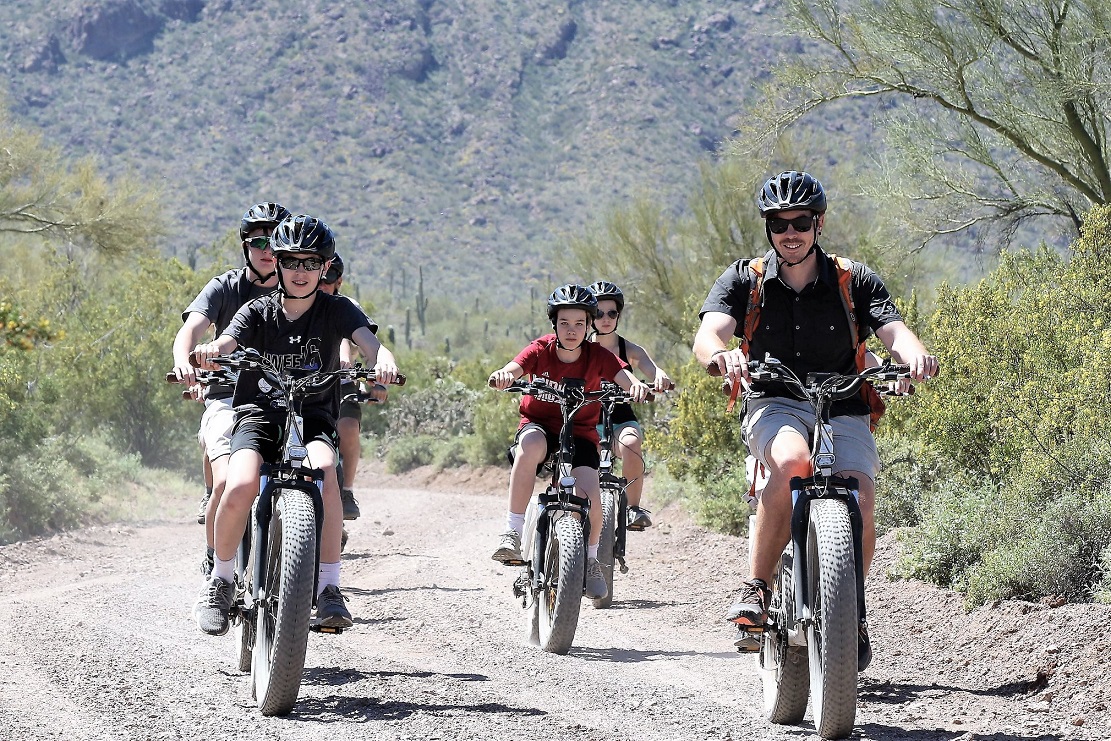Keeping the kids safe on vacation this summer

By Eileen Ogintz
Tribune Content Agency
Of course you want to kick back. It’s summer vacation, after all. But the reality is when you are vacationing with kids, you need to be extra vigilant.
That’s especially true around water. Did you know that drowning is the leading cause of injury-related death among children 1-4? And it’s the third leading cause of unintentional injury-related death among children 19 and under. And for every child who dies from drowning, another five receive emergency care for nonfatal submersion injuries.
Consider that children often were out of sight for less than five minutes and in the care of one or both parents when they drowned, according to the American Red Cross. African-American children ages 5 to 19 drown in swimming pools at rates 5.5 times higher than those of Caucasian children in the same age range .
Don’t think you are off the hook if there is a lifeguard, or the kids are good swimmers. One of you needs to be watching the kids at all times, the American Red Cross says. They should always swim with a buddy, and you should stay within arm’s reach of any weak or inexperienced swimmer who is in the water.

Designate a “water watcher” and alternate every 15 minutes. Do they know CPR or can immediately call 911 or alert someone nearby if someone is in trouble. Make sure their cell phone is off. Download a Water Watcher on Duty card and make sure they understand this is serious business.
Parents and caregivers can also take a free online water safety course for parents and caregivers. Download the free American Red Cross Swim App to engage kids in water safety with activities and videos. Longfellow the Whale helps kids to be water smart with age-appropriate videos and activities.
Water safety isn’t all you need to worry about on vacation either. Did you know you need to re-apply sunscreen every two hours, the experts say. Don’t forget sunglasses and hats.
Before heading out on your road trip, make sure your car seats are installed properly. More than half of car seats are not used or installed correctly, according to SafeKids.Org. Road injuries are the leading cause of preventable deaths and injuries to children in the United States; Correctly used safety seats reduce the risk of death as much as 71 per cent. Check here to find a car seat inspection station, just call ahead to make sure they are open.

And even though you don’t have to purchase a seat for a baby or a toddler on a plane, the FAA says young children are safest in their own seat in a safety seat approved for air travel. “It’s the smart and right thing to do,” the FAA says.
Besides, you probably are bringing your car seat with you on the trip. Just don’t leave the kids in the car.
Over the past 25 years, nearly 1000 kids have died of heatstroke because they were left or became trapped in a hot car, according to the National Highway Traffic Safety Commission which has a campaign to prevent heatstroke. A child’s body temperature rises three to five times faster than an adult’s and when a child is left in a hot vehicle, the situation can become dangerous quickly. Rolling down windows or parking in the shade does little to change the interior temperature of a car, the NTSB says. Make it a habit to check your entire vehicle—especially the back seat—before locking the doors and walking away. Put your purse or backpack in the back as an extra reminder.
Are you planning to ride bikes on vacation? Maybe you are bringing your own-and your own helmets, hopefully. Properly-fitted helmets can reduce the risk of head injuries by at least 45 percent – yet less than half of children 14 and under usually wear a bike helmet, SafeKids.org reports. And if you are renting bikes and helmets, make sure the helmets fit correctly. (A helmet should sit on top of the head in a level position, and should not rock forward, backward or side to side. The helmet straps must always be buckled, but not too tightly. Safe Kids recommends kids take the Helmet Fit Test )

Playgrounds are great places to meet local families. Seek out ones that have shock-absorbing surfaces like rubber, sand, or woodchips And make sure the kids aren’t wearing anything that can get caught on playground equipment—like drawstrings.
Have you played the “what if” game? What if the kids get separated from you? It happens- in a museum, a theme park, shopping in a resort town. They should know your cell phone numbers, if they are too young to have their own phones. Tell them to look for someone in uniform , like a police officer or theme park employee, who can help them—once they convey that their parents have gotten lost. It doesn’t hurt to remind them never to go off with a stranger, no matter how nice they may seem.
If you get separated on a hiking trail, tell the kids to “hug a tree” and wait for you. Giving everyone in the family a whistle is a good idea—they can blow it to tell you where they are.
Have you child proofed the vacation rental? That’s key when traveling with young kids. Remind those you are traveling with not to leave any medications, alcohol, cleaning supplies (like liquid laundry packets) within reach. Just in case, save the Poison Help Number (800-222-1222) on your phone.
And if anyone in your group has a gun, make sure it is stored unloaded with effective child-resistant gun locks in a locked container. Children as young as 3 years old may be strong enough to pull the trigger of a handgun.
It’s always a good idea to have a vacation safety checklist. Ready to start?
